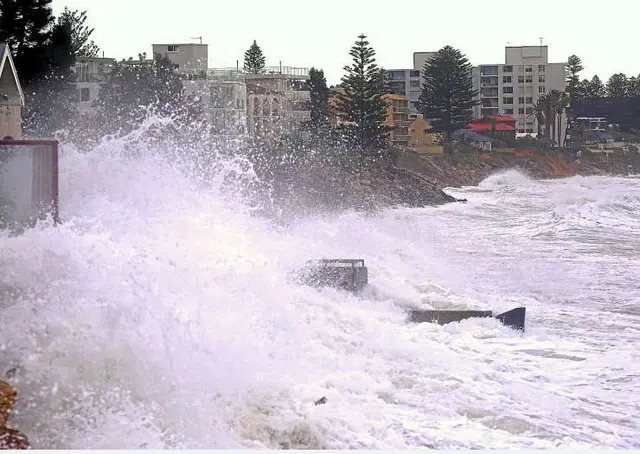After watching a chunk of her Sydney beachside home fall into the sea, Mrs Zaza Silk returned to her precariously located property and defiantly declared she had no intention of moving.
Pushing her local council to allow a sea wall to be built in an attempt to protect her and her neighbours' houses, she said: "You're not going to get rid of us."
But the fate of her property and others in coastal areas hard hit by recent dramatic storms has raised questions about the long-term future of Australia's cities.
About 85 per cent of Australia's 24 million residents live in cities and towns along the coast - and waterfront properties are among the nation's most expensive. Experts say the authorities must stop allowing developments in high-risk areas prone to erosion, especially as sea levels rise.
"We are not coping now, let alone in the future," an urban planning expert, Professor Barbara Norman of the University of Canberra, said on the ABC website.
"Urban development continues to be approved on the coastal edge along the eastern seaboard despite the costs to communities… Better coastal planning is required to minimise risks that will only be compounded by coastal climate change impacts, such as escalating storms, coastal erosion and sea level rise."
The damage to Mrs Silk's house and others in the northern Sydney suburb of Collaroy occurred during heavy storms and flooding along Australia's east coast two weeks ago. They caused several deaths and more than A$40 million (S$40 million) in damage.
The storms left houses teetering on the edge of beachside dunes and prompted 37 local councils to declare natural disaster zones.
The Bureau of Meteorology yesterday warned that heavy weather is again set to hit the coast from Sunday. Surf clubs have warned the public to avoid swimming at beaches, and home owners in vulnerable coastal suburbs have been advised to be ready to evacuate.
The recent damage has raised fears that Australian cities could face worse in the coming decades as climate change is tipped to cause rising sea levels and an increase in the number and severity of extreme weather events.
"As sea levels rise, some properties may be permanently inundated," said Dr Justine Bell-James, an environmental law lecturer at the University of Queensland, on The Conversation website.
"Others may be hit by storm surge impacts or erosion, which may be exacerbated by sea level rise. If these events continue to attract disaster relief, the financial burden will become too great for governments to bear."
According to a 2014 study by the federal government's Climate Council, sea level rises of 1.1m around Australia could cause more than A$226 billion in damage to houses, offices, roads, rail lines and other infrastructure by the end of the century.
An expert on sustainable urban development, Dr Awais Piracha of the University of Western Sydney, said the authorities should start encouraging people in risky areas to move and should stop construction in these areas.
"We should not be building too close to the beach or on dunes which are susceptible to erosion," he told The Straits Times.
"The states should identify all the places that will be inundated in the future, including places that have not been built on. For people living in those zones, they will need to be compensated."
While some residents have called for immediate fixes such as sea walls, most experts say these simply shift the hazard elsewhere. The solution lies in "managed retreats" in which residential housing is shifted to safer spots.
Dr Piracha pointed out that the risk to homes in Sydney is limited to coastal areas.
"We will not need to build new inland cities," he said. "We will have to rethink our coastal areas, not necessarily the whole cities."
(THE STRAITS TIMES)
 简体中文
简体中文

